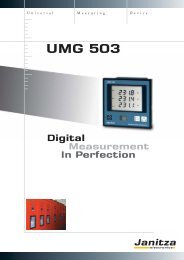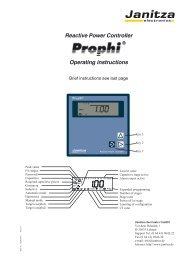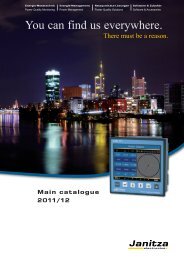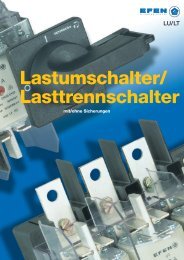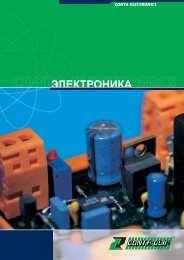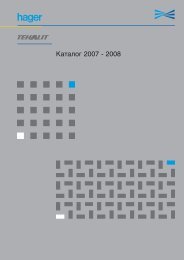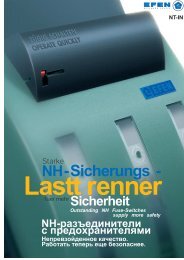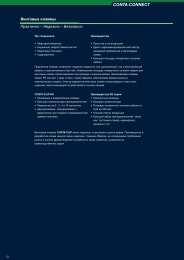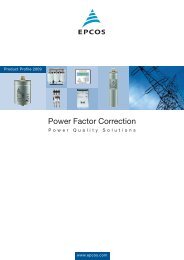Power Quality Monitoring
Power Quality Monitoring
Power Quality Monitoring
- No tags were found...
You also want an ePaper? Increase the reach of your titles
YUMPU automatically turns print PDFs into web optimized ePapers that Google loves.
▼Chapter 4Harmonic filtersImprovement of power quality, energy savings andstabilisation of the power supplyThe permanently increasing number of non-linear loads in our electricity networks causerising “network impurities”. We talk about network perturbations in a similar way to theway we talk about the environment with its water and air pollution. In an ideal situation,the generators in a power plant produce a pure sinusoidal-shaped current at the outputterminals. This sinusoidal-shaped voltage form is regarded as the ideal form of alternatingcurrent and any deviation from this form is described as a network perturbation. More andmore consumers take a non-sinusoidal-shaped current from the network. The FFT fastfouriertransformation of these polluted currents results in a wide range of harmonic frequencieswhich are usually referred to as harmonics.Harmonics are causing negative effects to electrical networks and can sometimes be dangerous.Connected loads can suffer in a way which is similar to the unhealthy effect impurewater has on the human body. This results in overload, reduced lifespan and under somecircumstances can even lead to premature failure of electrical and electronic components.Harmonics overloads are the main cause of invisible power quality problems with enormousmaintenance costs and investments for the replacement of defective equipment.Excessive network perturbations and the resulting poor power quality can also lead to problemsin production processes and can even result in production stoppages.Illustration: network perturbationthrough a frequency converter(above: voltage; below: current)What can you do to improve your power quality?There are different solutions for the restriction of harmonic currents which are caused by non-linear consumers which can therefore contributeto the improvement of power quality.De-tuned PFC systems (passive, de-tuned filter)Passive filters and de-tuned PFC systems are some of the traditional measures. In de-tuned PFC systems, power capacitors are switchedto the network individually or in groups and are regulated according to the power factor. Low-pass filters with a de-tuning factor, whichis more or less dependent upon a broadband filter effect (towards high frequencies), is generated through the filter circuit reactors whichare connected to the capacitor in series. This means that the occurrence of resonance is avoided and some harmonics are reduced fromthe network.AdvantagesNetwork optimisation with de-tuned PFC systems (harmonic filters) from Janitza ® result in the following advantages:Reduction of electricity bills through the elimination of reactive powerReduction of electricity bills through reduced kWh losses (I 2 R losses)Avoidance of resonance problems and significant safety risksImprovement of the general power quality (reduction of THD-U)Saving of maintenance costsDelay or avoidance of new investments through improved utilization of energy distribution systems and equipmentStabilisation of production processesStabilisation of supply voltage131



